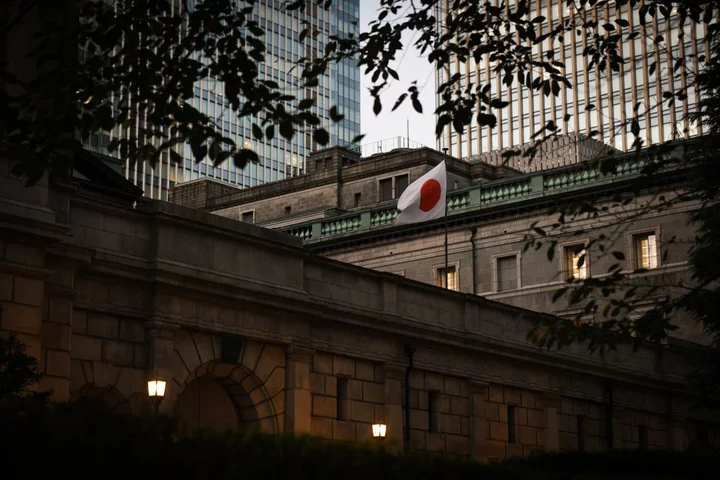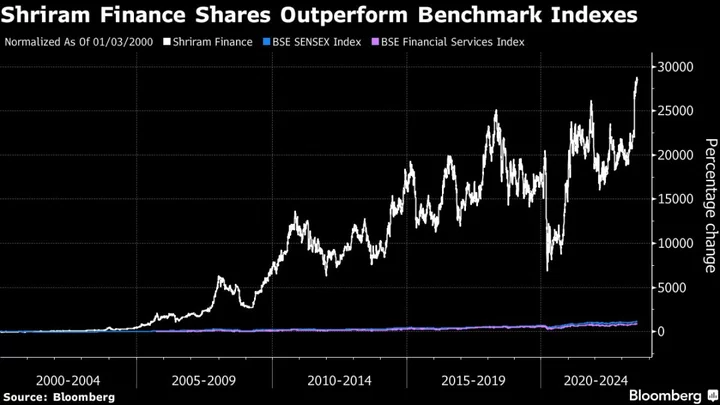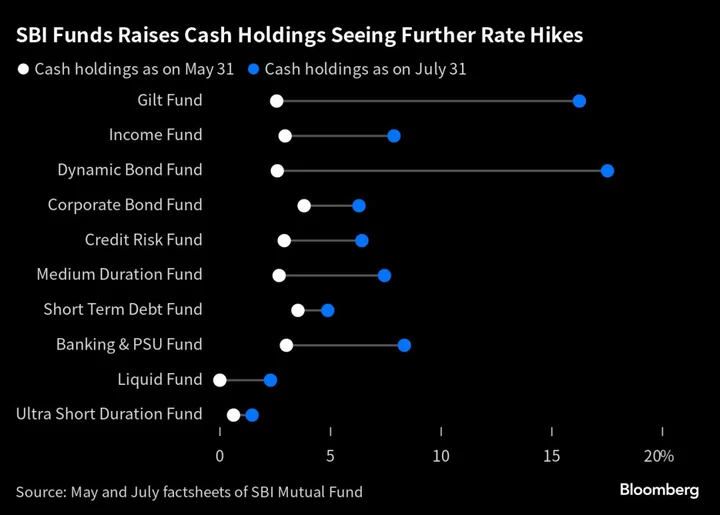The Bank of Japan announced an extra bond-buying plan for this week following an unscheduled operation it conducted on Friday, as a global debt selloff forces policymakers into the market to curb sharp increases in yields.
The BOJ will purchase extra amounts of 5-to-10-year debt on Wednesday as it strives to slow rising yields that are at the highest level in a decade. The benchmark 10-year maturity climbed to 0.775% Monday, a level last seen in 2013. Japan’s 20- and 30-year yields are at similar peaks while Treasury yields also keep moving higher.
Japanese sovereign yields have risen as speculation grows the central bank will end its negative interest rate sooner rather than later, while the US Federal Reserve will also keep borrowing costs high. The yen fell a bit after the announcement to as low as 149.82 per dollar, the weakest level since October last year and increasing concerns that Japan will intervene to support the currency.
“The BOJ is taking action as investor demand remains poor even though yields have climbed this far,” said Naoya Hasegawa, senior bond strategist at Okasan Securities Co. “Long-term and super-long yields have faced upward pressure basically due to concerns about the BOJ’s potential tweak to the current monetary policy.”
Hasegawa expects the amount of 5-to-10 year bond purchases would be ¥675 billion ($4.5 billion), the same as the last regular operation for this tenor.
Weighing on Japanese bonds included a summary of the BOJ’s September policy meeting that showed that board members discussed the progress made toward their inflation target and the need to put together an exit strategy for the super-easy policy. The BOJ’s Tankan survey released on Monday also showed that confidence among large manufacturers picked up more than expected.
Market rates are signaling trader expectations that Japan’s long-term yields are headed higher. Ten-year overnight indexed swaps, which investors use to hedge against or bet on a change in bond yields, touched the highest level since January at 0.985%, near the BOJ’s de facto ceiling of 1% for the 10-year yield.
The central bank tweaked its yield-curve control program on July 28 to make it more flexible, allowing the yield to rise as high as 1%. But it’s opposed yield rises that are too fast, and it stepped into the market three times since then to slow increases.
Speculation has grown that the BOJ will exit the current ultra-easy monetary policy even though Governor Kazuo Ueda has stuck with his cautious stance on the outlook for inflation. Ueda said Saturday the central bank has “still a distance to go” before shifting its current monetary policy, according to the text of a speech he gave at an academic meeting in Fukuoka.
--With assistance from Hidenori Yamanaka.
(Adds analyst comment, swap rate and 10-year yield.)









